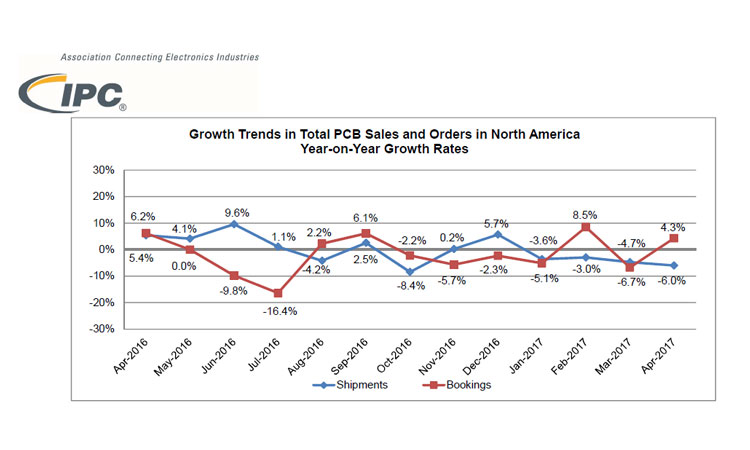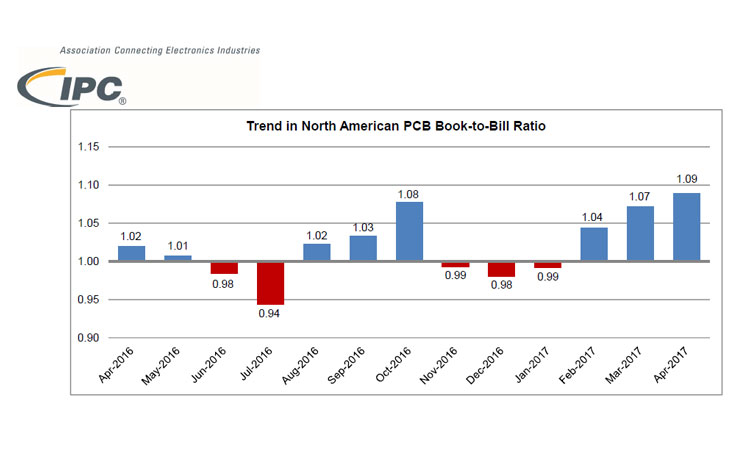North American PCB Order Growth Pushes Book-to-Bill Ratio Higher
IPC — Association Connecting Electronics Industries has announced the April 2017 findings from its monthly North American Printed Circuit Board (PCB) Statistical Program. Although sales continued below last year’s levels, orders were up and the PCB book-to-bill ratio continued to climb, reaching 1.09.
Total North American PCB shipments in April 2017 were down 6.0% compared to the same month last year. This year to date, shipments are 4.5% below the same period last year. Compared to the preceding month, April shipments increased 10.8%. PCB bookings in April increased 4.3% year-on-year, resulting in flat (0.0%) bookings growth compared the same period last year. Bookings were up 17.0% compared to the previous month. “A continuation of sluggish sales and a rebound in orders for the North American PCB industry drove the April 2017 book-to-bill ratio to its highest level in 20 months,” said Sharon Starr, IPC’s director of market research. “Despite lagging sales, three consecutive months of positive and climbing book-to-bill ratios is a positive indicator for strengthening sales in the next three to six months,” she added.
Detailed data available
The next edition of IPC’s North American PCB Market Report, containing detailed April data from IPC’s PCB Statistical Program, will be available next week. The monthly report presents detailed findings on rigid PCB and flexible circuit sales and orders, including separate rigid and flex book-to-bill ratios, growth trends by company size tiers, military and medical market growth, demand for prototypes, and other timely data. This report is available free to current participants in IPC’s PCB Statistical Program and by subscription to others.
Interpreting the data
The book-to-bill ratios are calculated by dividing the value of orders booked over the past three months by the value of sales billed during the same period from companies in IPC’s survey sample. A ratio of more than 1.00 suggests that current demand is ahead of supply, which is a positive indicator for sales growth over the next three to six months. A ratio of less than 1.00 indicates the reverse.
Year-on-year and year-to-date growth rates provide the most meaningful view of industry growth. Month-to-month comparisons should be made with caution as they reflect seasonal effects and short-term volatility. Because bookings tend to be more volatile than shipments, changes in the book-to-bill ratios from month to month might not be significant unless a trend of more than three consecutive months is apparent. It is also important to consider changes in both bookings and shipments to understand what is driving changes in the book-to-bill ratio.
IPC’s monthly PCB industry statistics are based on data provided by a representative sample of both rigid PCB and flexible circuit manufacturers selling in the USA and Canada. IPC publishes the PCB book-to-bill ratio at the end of each month. Statistics for the current month are normally available in the last week of the following month.




Comments are closed, but trackbacks and pingbacks are open.